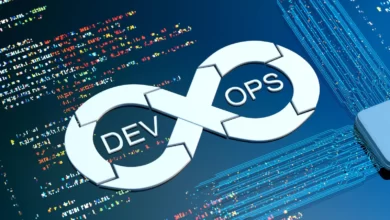Understanding the Differences: PMP and Scrum

In the world of project management, professionals have the opportunity to enhance their skills and knowledge through specialised training programmes. One such programme is PMP Training, which focuses on the principles and methodologies of the Project Management Professional (PMP) certification. PMP Training equips professionals with the necessary tools and techniques to effectively plan, execute, and control projects using a structured approach. On the other hand, Scrum is an agile framework that emphasises collaboration, adaptability, and iterative development. In this blog, we will delve into the key differences between PMP vs Scrum, exploring their unique characteristics, benefits, and suitable contexts for implementation.
What is PMP?
PMP, or Project Management Professional, is a globally recognized certification offered by the Project Management Institute (PMI). PMP focuses on providing professionals with a comprehensive framework for managing projects of various sizes and complexities. It follows a structured, process-oriented approach to project management, emphasising project initiation, planning, execution, monitoring, control, and closure. PMP encompasses a wide range of knowledge areas, including scope management, time management, cost management, risk management, and stakeholder management.
What is Scrum?
Scrum, on the other hand, is an agile framework that focuses on iterative and incremental project management. It is often used for software development projects but can be applied to various other industries as well. Scrum emphasises collaboration, adaptability, and continuous improvement. It consists of short iterations called sprints, during which cross-functional teams work together to deliver incremental product increments. Scrum places a strong emphasis on self-organisation, communication, and flexibility in response to changing requirements.
Principles and Methodologies
PMP is based on the Project Management Institute’s (PMI) framework, which outlines a set of best practises and processes for managing projects. It follows a predictive or waterfall methodology, where projects are carefully planned, executed, and monitored according to a predefined project plan. PMP emphasises comprehensive project documentation, stakeholder management, and risk mitigation strategies.
Scrum, on the other hand, is an agile framework that operates on the principles of flexibility, collaboration, and iterative development. It embraces change and promotes self-organising, cross-functional teams that work in short iterations called sprints. Scrum encourages adaptability, continuous improvement, and close collaboration with stakeholders throughout the project.
Project Lifecycle Approach
PMP follows a traditional project lifecycle approach, which includes sequential phases such as initiation, planning, execution, monitoring and controlling, and closure. Each phase has specific deliverables and processes that need to be completed before moving on to the next phase. This approach is suitable for projects with well-defined requirements and a need for rigorous planning and control.
Scrum, on the other hand, follows an iterative and incremental project lifecycle approach. It breaks the project down into shorter time frames called sprints, typically lasting two to four weeks. At the end of each sprint, a working product increment is delivered. The project evolves through multiple sprints, with the scope and requirements being flexible and adaptable to change.
Roles and Responsibilities
PMP defines specific roles and responsibilities within a project team. These roles include a project manager, who is responsible for overall project planning and execution, and various functional specialists who contribute their expertise to the project. PMP emphasises clear role definitions and hierarchical reporting structures.
Scrum, on the other hand, has three primary roles: the product owner, the scrum master, and the development team. The product owner represents the stakeholders and defines the project requirements, while the scrum master facilitates the scrum process and removes any impediments. The development team is responsible for delivering the working product increment.
Documentation and Communication
PMP places significant emphasis on documenting project activities and outcomes to ensure clarity and accountability. Deliverables in PMP projects are often tangible and well-defined, such as project plans, status reports, and final project deliverables.
In contrast, Scrum places less emphasis on extensive documentation. The focus is on delivering working product increments rather than producing extensive documentation. Scrum promotes face-to-face communication and collaboration within the project team. Instead of relying on detailed documentation, Scrum encourages open and frequent communication, often through daily stand-up meetings and regular reviews and retrospectives.
Application Areas
PMP is widely applicable across various industries and project types. It is particularly beneficial for large-scale, complex projects with well-defined requirements, strict deadlines, and a need for comprehensive planning and control. PMP is often used in industries such as construction, engineering, information technology, and manufacturing.
Scrum, on the other hand, is commonly employed in agile software development projects. It is well-suited for projects with rapidly changing requirements, high levels of uncertainty, and the need for continuous customer feedback. Scrum promotes flexibility and adaptability, making it popular in the software development industry.
Benefits and Limitations
PMP offers several benefits, including a structured and systematic approach to project management, comprehensive documentation, and a focus on stakeholder management. PMP-certified professionals possess a broad range of project management skills and are equipped to handle complex projects effectively. However, PMP’s rigid nature may limit its suitability for projects requiring high adaptability and flexibility.
Scrum provides benefits such as increased collaboration, faster feedback cycles, and the ability to respond quickly to changing requirements. It encourages self-organising teams and promotes a culture of continuous improvement. However, Scrum’s less prescriptive nature may lead to challenges in projects with complex dependencies or regulatory constraints.
Choosing the Right Approach
When deciding between PMP and Scrum, it is essential to consider the specific requirements and characteristics of your project. If your project has well-defined requirements, a need for rigorous planning and control, and a structured approach, PMP may be the right choice. On the other hand, if your project requires flexibility, adaptability, and frequent customer feedback, Scrum may be more suitable.
It is worth noting that PMP and Scrum are not mutually exclusive. In some cases, organisations may choose to combine elements of both methodologies, tailoring the approach to their specific needs. This hybrid approach allows for flexibility while maintaining a structured framework.
Conclusion
In conclusion, understanding the differences between PMP and Scrum is essential for project management professionals. PMP offers a structured and comprehensive approach, while Scrum promotes flexibility and collaboration. By considering your project’s specific requirements and the strengths of each methodology, you can make an informed decision on whether to pursue PMP Training or adopt Scrum. Remember, the choice between PMP and Scrum depends on your project’s nature, industry standards, and organisational needs. Both methodologies have their merits and can contribute to project success when implemented correctly.






One Comment